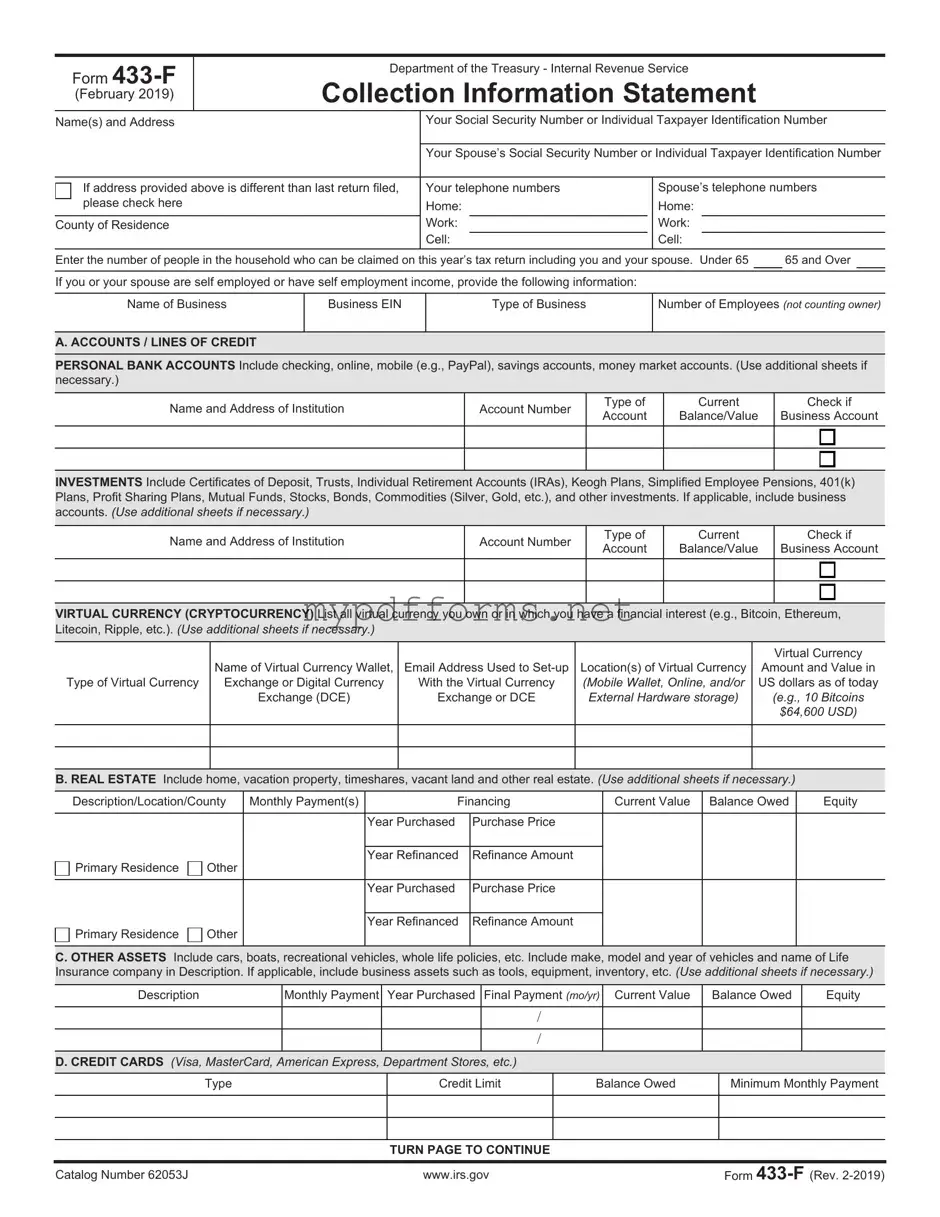The IRS Form 433-A is similar to Form 433-F in that both are used to collect financial information from individuals. Form 433-A is specifically designed for individuals who owe more than $50,000 in taxes and is more detailed. It requires information about assets, income, expenses, and debts. This comprehensive nature allows the IRS to evaluate an individual's ability to pay tax liabilities, just as Form 433-F does, but with a deeper dive into financial status.
For those navigating the complexities of tax documentation, understanding various forms is crucial, including the Employment Verification Letter which serves to confirm an individual's work status and financial reliability, often impacting their ability to manage tax obligations effectively.
Form 433-B is another related document, but it is tailored for businesses. Like Form 433-F, it gathers financial information to assess the business's ability to pay tax debts. It requires details about the business's income, expenses, and assets. Both forms aim to provide the IRS with a clear picture of financial situations, but 433-B focuses on business entities rather than individuals.
Form 656 is closely associated with the 433 series as it is used to submit an Offer in Compromise (OIC). While Form 433-F collects financial data, Form 656 uses that data to propose a settlement amount that is less than the total tax owed. The information provided on Form 433-F helps the IRS determine whether to accept the offer based on the taxpayer's financial situation.
Form 9465, the Installment Agreement Request, also shares similarities with Form 433-F. This form allows taxpayers to request a payment plan for their tax debt. To evaluate the request, the IRS may require financial information similar to that collected in Form 433-F. Both forms aim to facilitate payment of tax liabilities, albeit through different methods.
Form 1040 is the individual income tax return form that, while not directly similar, is crucial for understanding an individual’s financial situation. The IRS uses the information from Form 1040 to assess tax liability. When filing Form 433-F, taxpayers often reference their 1040 to provide accurate income and expense data, ensuring consistency in their financial disclosures.
Form 8821, the Tax Information Authorization, allows taxpayers to authorize someone to receive their tax information. While not a financial disclosure form like 433-F, it plays a role in the overall process of managing tax liabilities. Taxpayers often need assistance in understanding their financial obligations, and this form facilitates communication between the IRS and authorized representatives.
Form 2848, the Power of Attorney and Declaration of Representative, is another document that supports the management of tax matters. Similar to Form 8821, it allows a representative to act on behalf of the taxpayer. Understanding the taxpayer's financial situation, as outlined in Form 433-F, can help representatives negotiate with the IRS more effectively.
Lastly, Form 1099 is not a direct counterpart but is relevant in the context of income reporting. This form reports various types of income other than wages, salaries, and tips. When completing Form 433-F, taxpayers must account for all sources of income, including those reported on Form 1099. Accurate reporting of income is essential for the IRS to assess a taxpayer's financial ability to settle tax debts.
